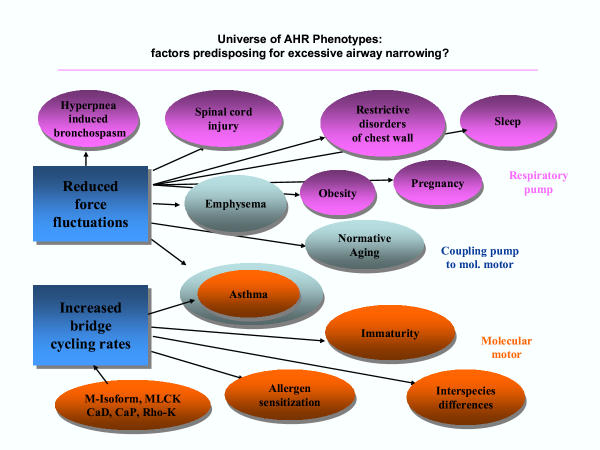Figure 2.
The perturbed equilibrium hypothesis connects phenotypes that were largely unexplained and had been thought to be essentially unrelated. Reduced force fluctuations and/or increased bridge cycling rates allow airway smooth muscle to more nearly approach a static equilibrium of myosin binding (latch) and the frozen state. Airway hyperresponsiveness phenotypes shown in blue correspond to circumstances in which the airway and airway smooth muscle might be normal but there is a problem with the respiratory pump, i.e., the muscles of the chest wall. Those shown purples correspond to phenotypes in which the airway smooth muscle may be normal, but there is a problem in the mechanical coupling between the respiratory pump and the myosin motor. Finally, those shown in green correspond to phenotypes in which the problem may be at the level of the myosin motor itself. At that level, the rate of bridge cycling is thought to be influenced by its isoform, the amount of myosin light chain kinase, caldesmon, calponin, Rho-kinase and other factors.

